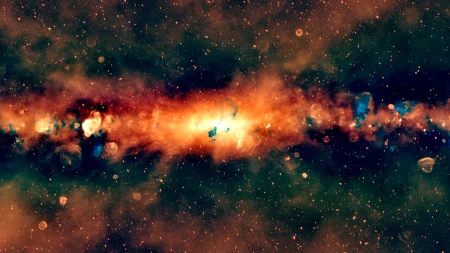The Mystery Behind Droplet Formation: A Dance of Molecules
When you watch a garden hose or kitchen faucet running, you might notice how the smooth stream of water eventually breaks up into individual droplets as it falls. This everyday phenomenon, something we rarely pause to contemplate, actually represents one of fluid dynamics’ enduring mysteries. For centuries, scientists have observed that flowing liquids naturally form droplets, but the exact trigger for this transformation remained elusive. Recent research suggests that the answer might lie in the microscopic realm – the random movements of individual molecules may be responsible for disrupting smooth liquid streams and creating the droplets we observe in our daily lives.
The process of a liquid stream breaking into droplets, known scientifically as “liquid jet breakup,” has practical implications far beyond your morning shower. Industries ranging from inkjet printing to fuel injection in engines, from fertilizer spraying in agriculture to pharmaceutical manufacturing, all rely on precise control of droplet formation. Understanding the fundamental physics behind this phenomenon could lead to improved technologies across these fields. What’s particularly fascinating is that while we’ve known since the 19th century that liquid streams are inherently unstable and will eventually form droplets, identifying the initial disturbance that triggers this process has proven remarkably challenging for researchers.
Classical physics provides a partial explanation through surface tension – the property that makes liquids behave as if they’re covered by an elastic skin. Surface tension causes liquids to minimize their surface area, which is why droplets naturally form spherical shapes (a sphere has the minimum surface area for a given volume). However, this doesn’t fully explain what initially disturbs a smooth-flowing liquid stream. Scientists have proposed various external factors like vibrations, air currents, or irregularities in the nozzle as potential culprits. Yet even when researchers meticulously controlled these factors in laboratory settings, liquid streams still broke into droplets, suggesting something more fundamental was at work.
The breakthrough came when researchers turned their attention to the molecular scale. All liquids consist of molecules in constant random motion, bouncing and jostling against each other in what’s known as Brownian motion. This molecular-scale randomness creates tiny fluctuations in density and pressure throughout the liquid. While these fluctuations are infinitesimally small, mathematical models and sophisticated simulations suggest they can be amplified by the liquid’s inherent instability. Like a tiny snowball that triggers an avalanche, these molecular disturbances can grow exponentially until they’re large enough to pinch the liquid stream into separate droplets. This explanation elegantly bridges quantum physics and everyday observations, suggesting that droplet formation might ultimately trace back to the fundamental uncertainty and randomness inherent in molecular behavior.
Confirming this theory experimentally presents extraordinary challenges since observing molecular dynamics in real-time remains beyond our current technological capabilities. However, indirect evidence supports the molecular origin hypothesis. By carefully analyzing the statistical patterns of droplet formation under various conditions, researchers have found signatures consistent with amplified molecular noise rather than external disturbances. The mathematics describing how these tiny fluctuations grow aligns remarkably well with observations of actual droplet formation. What’s particularly elegant about this explanation is its universality – it applies equally to water streaming from your shower, honey drizzling from a spoon, or rocket fuel being injected into a combustion chamber.
The journey to understand something as seemingly simple as why liquids form droplets reminds us of how extraordinary ordinary things can be. From the raindrops nourishing our gardens to the precise droplets delivering medication in modern medical devices, this ubiquitous phenomenon connects the invisible dance of molecules to experiences we encounter every day. As research continues, scientists hope to gain even greater control over droplet formation, potentially enabling new technologies and applications. The next time you watch water droplets forming from a tap, you might appreciate that you’re witnessing the amplified effects of molecular chaos, a beautiful demonstration of how microscopic randomness creates the patterns and structures that shape our macroscopic world.















